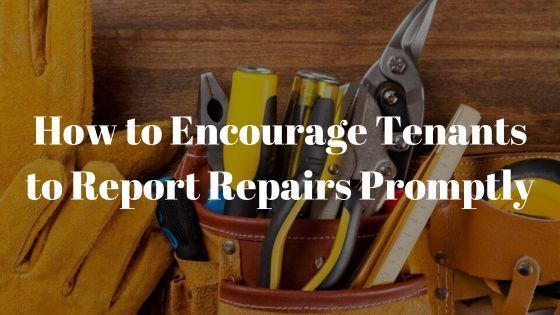How to Conduct a Tenant Walk-through Inspection
A walk-through inspection usually occurs at the beginning and end of a tenancy. At the start of a tenancy, a walk-through inspection helps check for any issues the property may have prior to renting it out. And when the lease ends, the landlord will go through the property to check for any damage the tenant may have caused.
A walk-through inspection helps protect both parties bound by the lease. For landlords, it helps document the property’s initial condition. This can prove helpful when a tenant is moving out, as the landlord can detect any damage and withhold from the damage deposit accordingly. Particularly if you're a new landlord, it's essential to know what to look for in an inspection.
A walk-through inspection also helps the tenant fix damages they weren't aware of. And once they have done so, they will improve their chances of getting their full security deposit back.
A properly conducted inspection is mutually beneficial, as landlords want their property to remain in good shape and tenants generally want to treat their homes well. Let's take a look at how to have inspection success.
7 Tips For a Successful Walk-Through Inspection
Document Your Property’s Condition in Advance
This will save you a lot of headache when the tenant finally moves out. Without a reference, it may be your word against your tenants'. And in the end, this may prove futile.
Create a form and begin making in inventory each room and its components. You can make your own form or download one from the internet, so long as it covers all the necessary aspects of your property necessary to determine that your property meets safety standards.
When you list a room, make sure to include all elements. Such elements may include: ceiling fans, light fixtures, sinks, windows, doors, walls, and floors. Make sure you’re as thorough as possible.
Next, create columns to record important information such as:
- Initial condition at tenant move-in
- Condition at end of lease
- Estimated cost of cleaning, replacing or repairing a damaged item
Finally, make sure both you and your tenant sign the list. You should also give a copy to your tenant for their own record so they aren't caught off guard come inspection time.
Conduct the Walk-through Together With Your Tenant
Prior to a tenant's move in date, schedule a time for the move-in inspection. Of course, agree on a time that’s most convenient for both of you.
Having both parties participate in the move-in inspection will help accomplish two important things. For one, it theoretically reduces disagreements when the tenant finally moves out because you'll be able to explain the responsibilities of each party.
And two, it helps set your expectations. You'll have the opportunity to note the differences between excessive damage and normal wear and tear, as well as to point out the oven’s clean interior, for example. .
As for the move-out inspection, make sure to check your local laws. In some states, it’s mandatory to have your tenant present while in others it isn’t necessary.
Test All Elements to Ensure They Are Working Properly
A walk-through inspection entails more than just checking the doors for broken knobs and the carpet for stains. You’ll also need to go through the property to ensure that all elements are in good working condition.
The last thing you’d want are complaints from the tenant about a malfunctioning air conditioner or a running faucet, for example—especially during the first few weeks. That can be a quick way to ruin a potentially great relationship with them.
Run all faucets. Open and close all windows and doors. Check that the microwave works. Flush all the toilets. Run the air conditioner. Be as thorough as you can. Does everything work correctly? If not, have the issue fixed by a professional.
Ideally, you want to do this prior to the actual walk-through inspection. Then repeat the same process during the actual walk-through inspection, once you're already aware of the condition of each aspect. This way, the tenant can’t claim later that the door wasn’t functioning properly or that the microwave never worked.
Document the Property’s Condition Visually
There is really no excuse for not doing this. It’s a simple DIY process that anyone can do with their smartphone. Take photos and videos of every room and element and preferably, have them dated.
Luckily, most smartphones have a timestamp feature available for photos, so you'll be fully aware of when your evidence dates from.
Remember to have the photos and videos backed up in a cloud storage system or a hard drive.
Simplify the Process
If you overcomplicate the inspection, the tenant may begin to question their decision to rent the property.
When documenting your property, don’t go overboard. Otherwise, you may make the tenant feel like they might also be held accountable for superficial marks or mess.
Allow the Tenant to Inspect the Property as Well
Allow your tenant to go through the property and find additional issues. Ideally, give them at least three days to conduct their search to their satisfaction. If something legitimate comes up, make sure to have it documented in both writing and photos.
Realistically, determining whether everything is working as it should could take a few days. For example, your tenant could fail to notice the broken cabinet until they move in a few days later and open it to store glasses or dishes. Similarly, the dishwasher may come on, but the tenant may not know it isn’t working properly until they actually load some dishes.
As a responsible landlord, you want to act with transparency and make every effort to ensure a good relationship with your tenants.
Learn Your State's Laws
Different states have different laws in regards to what you can and can’t do when a tenant moves in and out, so be sure to familiarize yourself with the laws in North Carolina.
These laws may also limit how much you can collect as a security deposit, reasons you may withhold some or all of it, and the timeline for returning deposits.
In addition, these laws may also indicate which repairs each party to the lease is responsible for.
If you are just getting started, hiring a qualified property management company may be in your best interest.
A professional property management company may not only be knowledgeable about the local laws, but they may also help you create a foolproof lease agreement as well.
Inspections help protect you and your property against liabilities arising from misuse of the property. If you still find this daunting, consider hiring expert help from a reputable
property management company.











